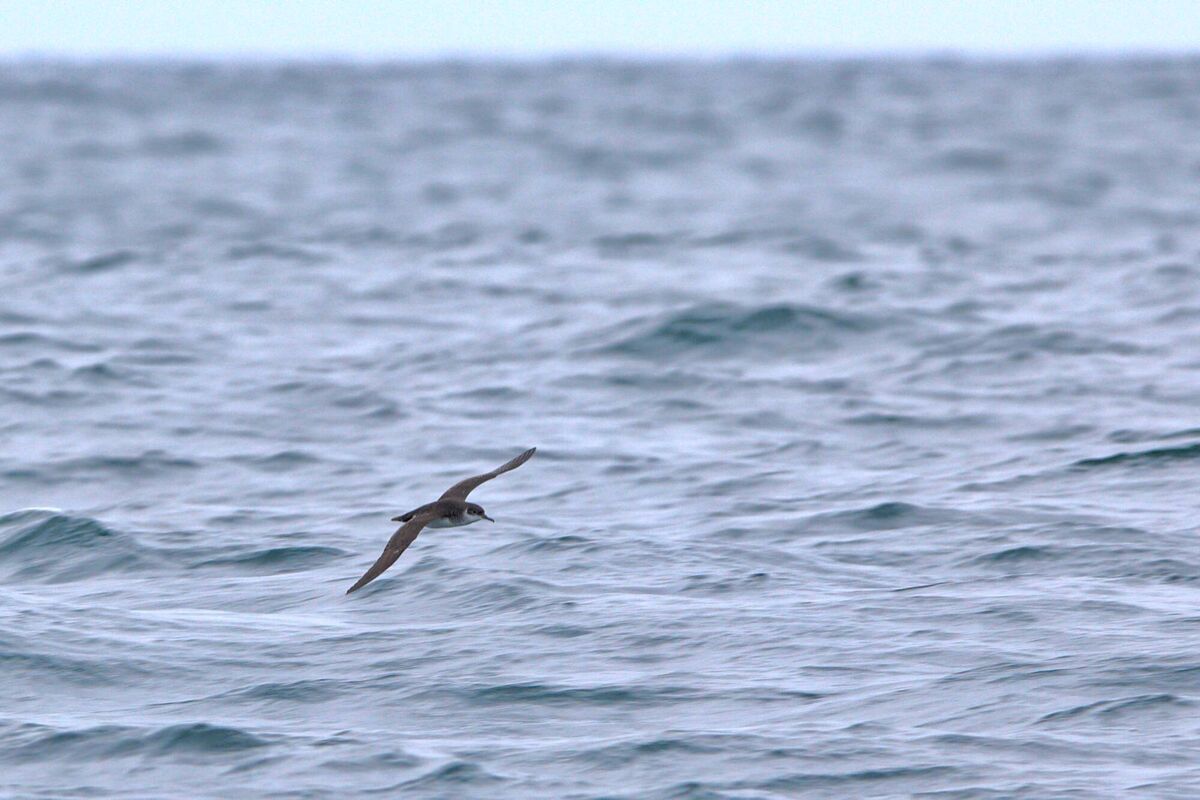UCC scientist fits tiny trackers to 36 Manx shearwaters to measure their dives

UCC ecologist, Jamie Darby, and his team fitted tiny tracking devices to 36 Manx shearwaters on Little Saltee off the Wexford coast. He subsequently logged 5,472 dives, made by the birds during 79 foraging trips, and correlated the results with "factors affecting underwater visibility, including water turbidity, cloud cover and solar angle"
Everyone loves puffins. Gannets guillemots and ‘stormy petrels’ feature in despatches occasionally but not the Manx shearwater; the man-on-the-street scarcely ever hears of it. Yet, we are especially responsible for the continued welfare of this unique bird: around 80% of the world’s ‘manxies’ breed colonially on 50, mostly uninhabited, Irish, Welsh and Scottish islands.

This long-winged black-and-white seabird’s low public profile results from its self-effacing lifestyle. The cruciform shape, wheeling low between wave crests against the horizon, is seldom seen from shore. Even visiting a breeding colony, you might be unaware of its presence — the nests are deep in burrows. And off-duty shearwaters don't lounge about on grassy island slopes, the way puffins do.

Parents visit nests only in the dead of night when they change shift to continue incubating their single egg or feed the growing chick. Their cacophony of wild screams howls and coos, especially raucous on pitch-dark misty nights, is unforgettable, but the bird is silent at all other times.
Although unknown to the general public, the shearwater chorus is among the weirdest — and most unnerving — sounds in Irish nature. Nor do adults and juveniles remain on after the breeding season. They head for waters off America.

All is not well with our seabirds; gannets are holding their own but the numbers of most other species are falling. With rising ocean temperatures, the fish they eat are moving northwards to cooler seas. The drop in prey numbers, it has been suggested, is compounded by decreased visibility underwater.
In a paper just published, scientists at UCC say that "a changing climate is exaggerating the physical processes that increase ocean turbidity, such as wave action and seabed shear stress" making it harder for diving seabirds to find and pursue fish.
The researchers enlisted an ally to help them study this; the Manx shearwater.

Unusually for such a superb flyer, this ocean wanderer is also an accomplished pursuit diver. With legs adapted for swimming, shearwaters can’t walk. Coming ashore in the dead of night, they shuffle awkwardly along the grassy slopes to their burrows, driven by the calls of their mates underground.
Dazzled in the light of a hand-held torch, they can be captured easily. Ringing shearwaters, amid their ghostly shrieks in the wet darkness, is an unforgettable experience.
UCC ecologist, Jamie Darby, and his team fitted tiny tracking devices to 36 shearwaters on Little Saltee off the Wexford coast. He subsequently logged 5,472 dives, made by the birds during 79 foraging trips, and correlated the results with "factors affecting underwater visibility, including water turbidity, cloud cover and solar angle".

The birds "were more likely to initiate area restricted search and foraging dives in clearer waters" they found. "High solar angles, clear waters and low cloud-cover all lead to greater maximum dive depths". Murky waters, it seems, impair a diving bird’s ability to hunt.
He and his co-authors conclude: "Our data indicate that climate change could negatively impact seabird populations by making prey more difficult to detect..." This is the first published research on this topic.
- J Darby et al. Underwater visibility constrains the foraging behaviour of a diving pelagic seabird. Proc. of the Royal Society B: Biological Sciences. 2022
CLIMATE & SUSTAINABILITY HUB








